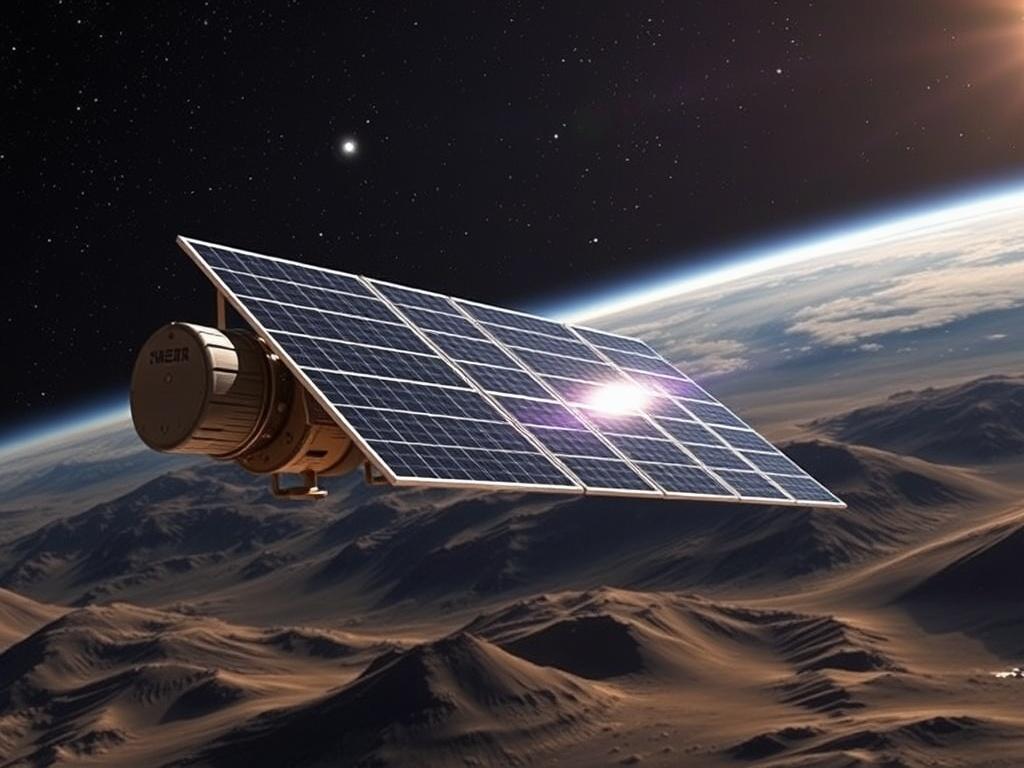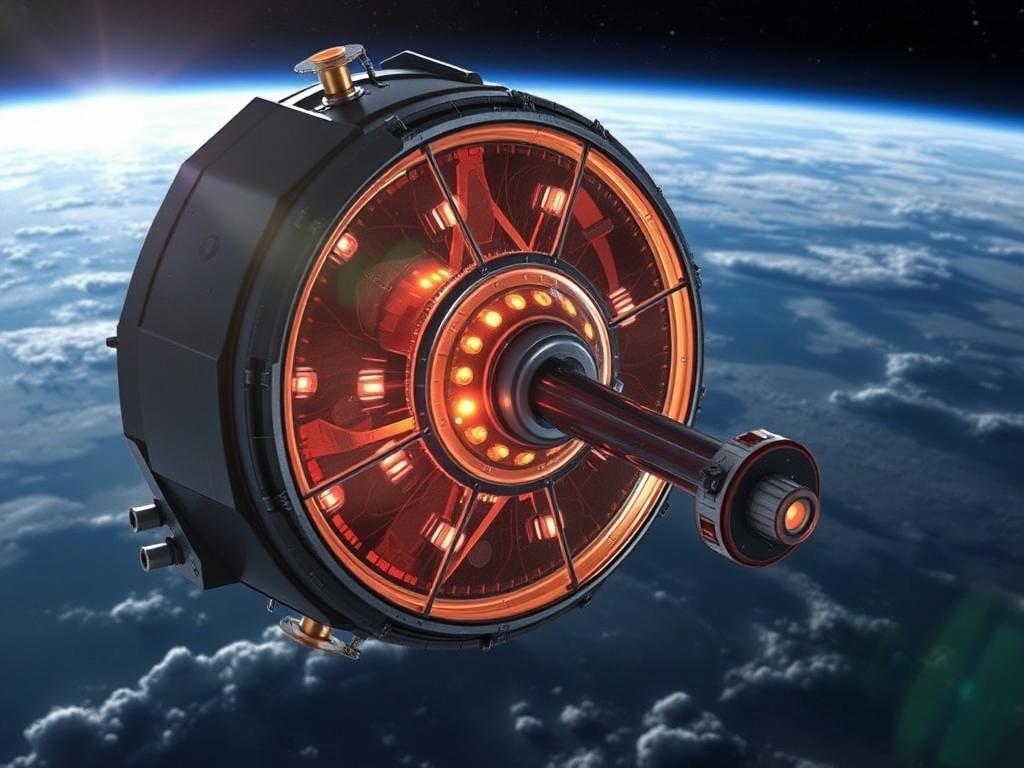- What Is Space-Based Solar Power?
- Key Components of a Space-Based Solar Power System
- Why Is Space-Based Solar Power So Exciting?
- Advantages of Space-Based Solar Power
- The Technological Hurdles Keeping SBSP in Development
- Launch and Construction Costs
- Energy Transmission and Safety
- Space Debris and Durability
- Maintaining and Operating Systems Remotely
- Current Developments and Countries Driving Space-Based Solar Power
- Japan
- China
- United States
- Other Global Efforts
- How Space-Based Solar Power Could Change Our Energy Landscape
- Environmental Impact Reduction
- Energy Access for Remote Areas
- Grid Stability and Energy Storage
- Potential Risks and Ethical Considerations
- Health and Safety Concerns
- Military and Security Issues
- Space Environment Management
- The Path Forward: What Needs to Happen Next?
- Summary Table: Space-Based Solar Power Pros and Cons
- Conclusion
Imagine harnessing the sun’s energy not from the ground, but from space, where sunlight streams uninterrupted by clouds, weather, or the day-night cycle. This futuristic vision, known as Space-Based Solar Power (SBSP), has captivated scientists, engineers, and futurists for decades. But is it merely a pipe dream born from science fiction imagination, or are we truly on the brink of seeing space-based solar power become a realistic, practical solution to our energy needs? In this article, we will dig deep into the concept, technologies, challenges, and potential impacts of SBSP, bringing you a comprehensive guide on why this innovative idea might soon leap from theory to reality.
What Is Space-Based Solar Power?

At its core, space-based solar power involves collecting solar energy in space using satellites equipped with solar panels and then transmitting that energy back to Earth in a usable form, typically via microwave or laser beams. The idea isn’t new; in fact, it was first proposed in the 1960s. However, only in recent years have advancements in technology and the growing need for clean, renewable energy pushed the concept into serious consideration and development.
Unlike terrestrial solar farms, which depend on sunlight filtered through the Earth’s atmosphere and are affected by weather and night cycles, SBSP satellites orbiting in geostationary orbit can receive constant, uninterrupted sunlight 24/7. This means they can generate far more energy than ground-based installations. The energy captured is then converted into microwave beams that are safely sent down to receiving stations on Earth. Here, the microwaves are converted back into electricity and fed into the grid.
Key Components of a Space-Based Solar Power System
| Component | Description |
|---|---|
| Solar Collectors | Large arrays of photovoltaic cells that harvest sunlight in space. |
| Energy Conversion System | Converts solar energy into microwave or laser beams for transmission. |
| Transmission System | Microwave or laser transmitters that send energy to Earth. |
| Receiving Station (Rectenna) | Ground-based large antenna arrays that receive the beam and transform it back into electrical power. |
| Power Management | Controls and distributes the converted energy into the power grid. |
Why Is Space-Based Solar Power So Exciting?
The tremendous appeal of space-based solar power lies in its promise to provide clean, renewable energy on a scale never before possible. Traditional solar panels on Earth face numerous limitations—from geographical constraints to weather interruption and the obvious nighttime downtime. But SBSP satellites could beam constant, reliable solar energy to anywhere on Earth, day or night.
Think about the growing global demand for electricity and the urgent need to reduce greenhouse gas emissions to combat climate change. SBSP offers a way to supplement existing energy solutions, potentially powering cities, industries, and even remote areas that lack access to reliable electricity. This continuous energy supply could help stabilize power grids and support the increasing electrification of transportation and industry.
Advantages of Space-Based Solar Power
- Uninterrupted Energy: Space solar panels are not affected by weather, seasons, or night time.
- Higher Energy Density: Receiving unobstructed sunlight means much more energy can be harvested compared to ground-based solar.
- Clean and Renewable: Non-polluting and reduces reliance on fossil fuels.
- Global Reach: Energy can be directed to any location on Earth where it’s needed.
- Scalability: Potential to expand capacity by launching more satellites.
The Technological Hurdles Keeping SBSP in Development
Although the vision is inspiring, turning space-based solar power into a real-world system is no small feat. There are significant technological and economic challenges that researchers and companies must overcome.
Launch and Construction Costs
One of the largest obstacles is the cost of sending large, heavy solar panel arrays and equipment into orbit. Current rocket launches remain expensive and limited in payload capacity. Building massive space structures that can capture, convert, and transmit energy also pushes the limits of current space engineering.
Energy Transmission and Safety
Sending energy back to Earth requires converting electricity into a microwave beam and beaming it across hundreds of kilometers through the atmosphere. The efficiency of this transmission and the safety of the beams for people, wildlife, and aircraft must be guaranteed. Advances in directed energy technology and the design of large rectenna arrays are vital to success.
Space Debris and Durability
Satellites in geostationary orbit must withstand harsh space environments, including radiation, temperature extremes, and micrometeorite impacts. Furthermore, space debris poses risk to the large fragile structures required for SBSP.
Maintaining and Operating Systems Remotely
With systems hundreds of thousands of kilometers away, repair and maintenance are incredibly challenging. Autonomous or remotely controlled robotic systems are envisioned but still need major development.
Current Developments and Countries Driving Space-Based Solar Power
Despite the hurdles, interest and investment in SBSP are growing worldwide. Many governments, space agencies, and private companies are conducting research, prototypes, and pilot projects that are bringing the concept closer to reality.
Japan
Japan has been one of the most proactive nations in pursuing SBSP. The Japan Aerospace Exploration Agency (JAXA) has an ambitious roadmap that includes demonstrating microwave energy transmission using small satellites and eventually building a modular space solar power station. Japan’s long-term vision is to have a commercial SBSP system operational by mid-century.
China
China has also invested heavily in SBSP, with plans to launch experimental communication satellites capable of wireless power transmission. They propose developing megawatt-class SBSP satellites and have timeline goals aligned with their master space plans up to the 2030s.
United States
The U.S. government and private aerospace companies like Northrop Grumman and SpaceX are exploring SBSP technologies. NASA has conducted studies on modular spacecraft and power transmission methods. There is also increasing interest in utilizing SBSP for future lunar and Martian missions, which could help bootstrap in-space solar power technologies.
Other Global Efforts
European research centers and institutes have contributed theoretical studies and technology development. Startups and academic groups worldwide are helping tackle specific challenges, such as materials science for large solar arrays and beam transmission efficiency.
How Space-Based Solar Power Could Change Our Energy Landscape

The adoption of SBSP could revolutionize how humanity generates and consumes energy. The environmental benefits alone make it worthwhile to explore alternatives.
Environmental Impact Reduction
Terrestrial solar farms require vast land areas, which can disrupt ecosystems and agriculture. In contrast, SBSP systems don’t take up land and can reduce the need for environmentally detrimental fossil fuel extraction, lowering carbon emissions significantly.
Energy Access for Remote Areas
Many regions around the world still have limited or no access to reliable electricity. SBSP could beam energy directly to isolated or disaster-stricken areas, aiding development and improving quality of life.
Grid Stability and Energy Storage
Intermittency is a key drawback of renewable energy sources like solar and wind. The continuous availability of solar power from space helps mitigate this problem, reducing the reliance on costly and sometimes environmentally risky energy storage solutions.
Potential Risks and Ethical Considerations

While the promise of SBSP is huge, there are potential risks and ethical issues that need careful consideration.
Health and Safety Concerns
Although studies suggest microwave energy beams can be made safe, continuous monitoring and regulation are essential to prevent any harmful exposure to humans, animals, and the environment.
Military and Security Issues
Large-scale space energy transmission systems could potentially be weaponized or become targets for sabotage. International guidelines and treaties will be important in governing the peaceful use of SBSP technologies.
Space Environment Management
Launching large numbers of satellites increases the risk of space congestion and debris, which could threaten existing satellite infrastructure. Responsible deployment and end-of-life disposal practices will be critical.
The Path Forward: What Needs to Happen Next?
For space-based solar power to truly become a reality, several key steps must be prioritized:
- Reducing Launch Costs: Innovations in reusable rockets and advanced propulsion will make creating larger space structures economically feasible.
- Advancing Materials Technology: Lightweight, durable materials will enable the construction of large solar arrays and transmission systems.
- Demonstration Projects: Small-scale experiments and pilot projects will validate technology and build confidence among policymakers and investors.
- International Collaboration: SBSP requires global cooperation to establish regulations, manage space resources, and share benefits equitably.
- Public Awareness and Support: Educating people on the benefits and addressing concerns will be crucial for funding and adoption.
Summary Table: Space-Based Solar Power Pros and Cons
| Pros | Cons |
|---|---|
| Uninterrupted solar energy supply | High initial launch and construction costs |
| Clean, renewable energy with low environmental footprint | Technological challenges in power transmission and satellite maintenance |
| Energy can be delivered anywhere on Earth | Potential safety and security concerns over energy beams |
| Supports global efforts to reduce fossil fuel dependency | Space debris and orbital congestion risks |
Conclusion
Space-based solar power has long seemed like the stuff of science fiction, yet steadily advancing technology and the pressing need for sustainable energy are pushing it closer to a tangible future. While there remain significant technical, economic, and regulatory hurdles, the potential benefits—uninterrupted, clean, and abundant energy—are extraordinary. With international collaboration, continued innovation, and careful management, SBSP could become a cornerstone of the global energy landscape, revolutionizing how humanity harnesses the power of the sun. Rather than a distant dream, space-based solar power may soon be illuminating our homes, industries, and cities, propelling us toward a cleaner, more sustainable era.
Как вам статья?







